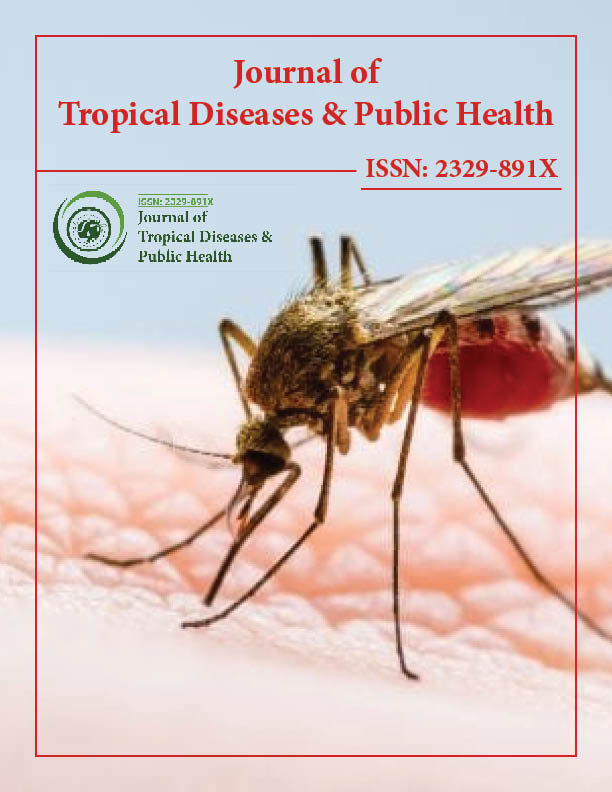Indexed In
- Open J Gate
- Academic Keys
- ResearchBible
- China National Knowledge Infrastructure (CNKI)
- Centre for Agriculture and Biosciences International (CABI)
- RefSeek
- Hamdard University
- EBSCO A-Z
- OCLC- WorldCat
- CABI full text
- Publons
- Geneva Foundation for Medical Education and Research
- Google Scholar
Useful Links
Share This Page
Journal Flyer

Open Access Journals
- Agri and Aquaculture
- Biochemistry
- Bioinformatics & Systems Biology
- Business & Management
- Chemistry
- Clinical Sciences
- Engineering
- Food & Nutrition
- General Science
- Genetics & Molecular Biology
- Immunology & Microbiology
- Medical Sciences
- Neuroscience & Psychology
- Nursing & Health Care
- Pharmaceutical Sciences
Commentary - (2024) Volume 12, Issue 4
Innovating and Collaborating in Vaccine Technology to Address Climate Impacts on Disease X Emergence and Future Pandemics
Blaesi Eider*Received: 25-Nov-2024, Manuscript No. JTD-24-27733; Editor assigned: 29-Nov-2024, Pre QC No. JTD-24-27733 (PQ); Reviewed: 13-Dec-2024, QC No. JTD-24-27733; Revised: 20-Dec-2024, Manuscript No. JTD-24-27733 (R); Published: 27-Dec-2024, DOI: 10.35241/2329-891X.24.12.456
Description
Disease X represents an as-yet-unknown pathogen with the potential to cause a severe epidemic or pandemic. This outlines a comprehensive structure for awareness and response, integrating epidemiological modeling, rapid diagnostics, vaccine development and global coordination. The need for interdisciplinary collaboration and resilient healthcare systems is emphasized, along with ethical considerations in managing scarce resources during an outbreak. This framework aims to guide policymakers, healthcare professionals and researchers in mitigating the impact of future infectious disease threats.
Emerging infectious diseases pose significant challenges to global health security. Disease X, a term coined by the World Health Organization (WHO), encapsulates the threat of unknown pathogens with pandemic potential. Unlike known diseases, Disease X requires novel strategies due to its unpredictable nature. This manuscript explores the key components of preparedness and response, emphasizing proactive measures to minimize morbidity, mortality and socio-economic disruption.
Innovations in vaccine technology have significantly enhanced the global response capacity to emerging pathogens, including those classified as Disease X. The advent of mRNA vaccines, viral vector platforms and protein subunit technologies has revolutionized the speed and scalability of vaccine development. These platforms allow for rapid adaptation to novel pathogens, providing a flexible approach to combating previously unknown threats. For instance, mRNA technology facilitates quick vaccine design by encoding the genetic sequence of viral proteins, allowing immune system priming without the need for live virus cultivation. Such innovations have been pivotal during the COVID-19 pandemic and offer a promising model for addressing Disease X. Scalable manufacturing and global distribution networks further ensure that vaccines can be deployed efficiently to populations in need. The emphasis on cold-chain independence for newer vaccine formulations also improves accessibility in resource-limited settings, making these innovations instrumental in bridging health inequities.
Another critical factor influencing the emergence and impact of Disease X is climate change. As global temperatures rise, ecosystems are being disrupted, leading to increased interactions between humans and wildlife. These changes elevate the risk of zoonotic spillovers, where pathogens jump from animals to humans. Climate-induced phenomena such as deforestation, urbanization and changing agricultural practices exacerbate these risks by bringing humans closer to wildlife reservoirs of potential pathogens. For example, shifts in mosquito population dynamics due to warming temperatures have already expanded the geographical range of vector-borne diseases like dengue and malaria. Such trends are a stark reminder of the interconnectedness between environmental changes and public health outcomes. Addressing the root causes of climate change, such as reducing carbon emissions and preserving natural habitats, is thus integral to mitigating the risks associated with Disease X.
The convergence of vaccine innovation and climate resilience presents an opportunity to develop integrated strategies for managing Disease X. While advancements in vaccine technology provide a critical defense mechanism, they must be complemented by preventive measures addressing environmental factors. Strengthening global surveillance systems to monitor ecological and epidemiological trends can provide early warnings of potential outbreaks. Collaboration between sectors, including healthcare, environmental science and technology, is essential to creating a comprehensive framework for pandemic preparedness. Investments in research and development for next-generation vaccines must also consider climate-induced shifts in disease patterns, ensuring that future interventions are adaptable to emerging threats.
The emergence of hypothetical pathogens like the Dinga Dinga Virus underscores the urgency of these efforts. Such scenarios highlight the importance of a multifaceted approach that combines technological innovation with environmental stewardship. By proactively addressing the dual challenges of vaccine development and climate change, the global community can enhance its resilience against the unpredictable threats posed by Disease X. This proactive stance not only safeguards public health but also contributes to broader socio-economic stability by reducing the disruptive impacts of pandemics on communities and economies worldwide.
The emergence of the hypothetical Dinga Dinga Virus serves as a relevant scenario for applying the Disease X framework. Characterized by rapid human-to-human transmission and high fatality rates, the Dinga Dinga Virus underscores the importance of swift diagnostic development and vaccine deployment. Simulation models predict that early interventions could reduce mortality by up to 60%. The global response to Dinga Dinga Virus highlights the need for robust international collaboration and resource-sharing mechanisms to manage such threats effectively.
Preparedness for Disease X requires a paradigm shift from reactive to proactive approaches. Investment in research and development, coupled with robust public health policies, can mitigate the impact of unknown pathogens. Lessons from recent pandemics underscore the importance of unity, innovation, and resilience in combating global health threats.
Citation: Eider B (2024). Innovating and Collaborating in Vaccine Technology to Address Climate Impacts on Disease X Emergence and Future Pandemics. J Trop Dis. 12:456.
Copyright: © 2024 Eider B. This is an open-access article distributed under the terms of the Creative Commons Attribution License, which permits unrestricted use, distribution, and reproduction in any medium, provided the original author and source are credited.

